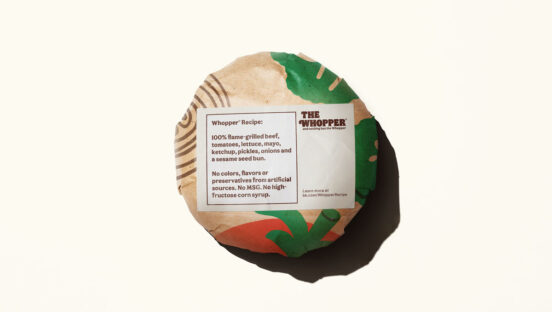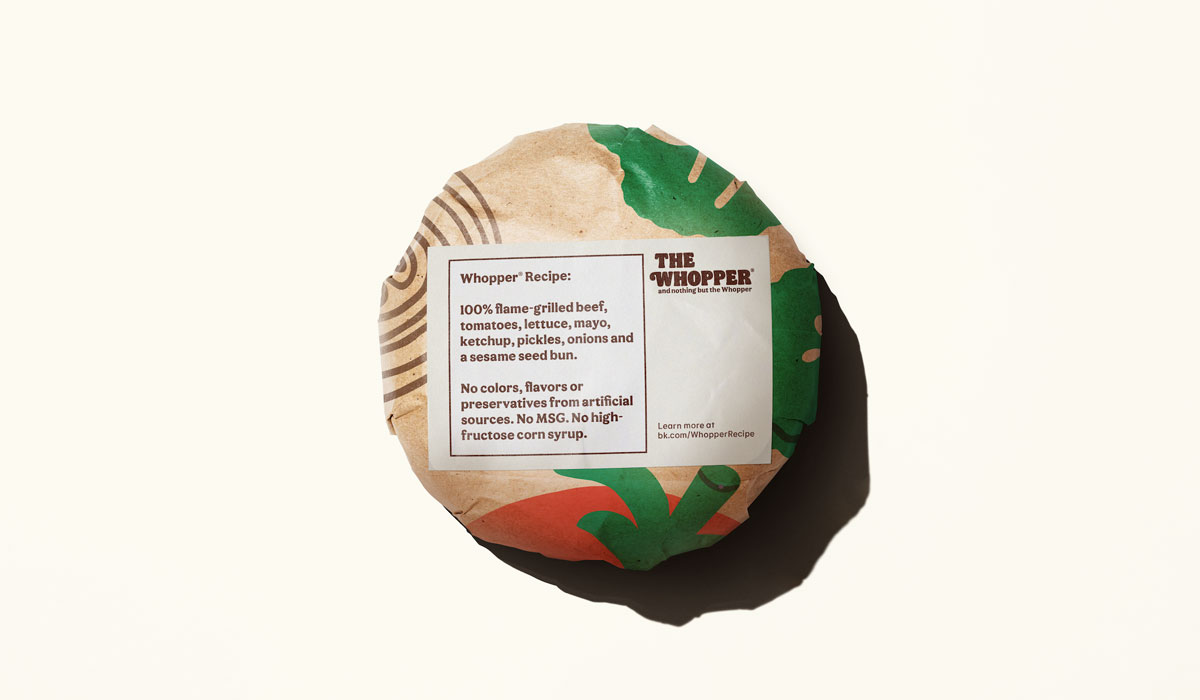Burger King’s $400 million “Reclaim the Flame” turnaround plan took months of collaboration between the company and a diverse group of franchisees, but little time has been wasted with implementation.
It started in early October when the brand conveyed a new voice. Burger King exchanged its decades-old “Have it Your Way” tagline for the fresher-sounding, “You Rule.” The upgrade was accompanied by commercials that put a hip-hop spin on the classic “Have it Your Way” jingle from the 1970s. That marked the beginning of the chain’s $120 million advertising co-investment with franchisees. Burger King will spend this figure over nine quarters beginning in Q4. If profitability goals are met by the end of 2024 and 2026, the figure will be matched by a 50-basis-point increase in ad contributions from participating operators through 2028. The plan was endorsed by 95 percent of franchisees, or roughly 475 out of 500.
“It’s designed to increase our media firepower, grow traffic, and amplify the fundamental improvements we’re making to the guest experience around menu, operations, and digital,” RBI CEO José Cil said to investors during the company’s Q3 earnings call.
Franchisees are just as amped about the $50 million Royal Reset Refresh investment in restaurant technology, kitchen equipment, and building enhancements, the company said. The program includes a dollar-for-dollar matching contribution from franchisees. When Burger King opened a two-week application in mid-October for operators, it was oversubscribed before the first week ended. Cil said field teams are now in the process of approving requests for upgrades that will provide the best return for each unit.
Burger King has already shown what this could look like. Earlier this year, the brand went into its company-owned Miami restaurants, overhauled physical hardware, inserted a new proprietary POS system, kitchen display monitors, bump bars, indoor and outdoor menu screens, and updated internet and cabling. These enhancements have resulted in technology uptime of nearly 100 percent and a roughly 30 percent rise in guest satisfaction since last year.
“This positive experience in our company restaurants is a basis for some of the near-term initiatives in Burger King’s Royal Reset plan, where we are partnering with our franchisees to bring the most important technology upgrades from 50 restaurants in Miami to thousands across the country as soon as possible,” COO Josh Kobza said. “I’m really excited about this, and our technology teams are thrilled to bring new equipment and better support to our restaurants.”
READ MORE: Inside Burger King’s $400M Comeback Plan
The $200 million remodel program is receiving great feedback as well, which Cil attributes to the “compelling incentives” put in place. Burger King will offer upfront capital after completion of a project as opposed to targeting royalties or adding credits over time. The idea is that by providing capital immediately, franchisees won’t have to draw from other sources to facilitate their investment. However, the company said it understands that many operators will need to use other resources, and that it’s willing to work with franchisees and lenders to reach a solution.
Instead of focusing on stores with expiring franchise agreements, the incentive prioritizes restaurants with the greatest potential and franchisees with the strongest operations, as measured by a Franchise Success System. For operators that don’t have the necessary capital and don’t show enough engagement, Cil said there are plenty of well-positioned franchisees willing to step in and acquire stores. He added that closures and turnover are part of the optimization process, but that he doesn’t expect any outsized shutdowns from the overall Reclaim the Flame strategy.
“We have a deep bench of franchisees in the U.S. that are well-capitalized that run really good restaurants,” Cil said. “It happens. It’s not unique to this moment, but it happens from time to time that the franchisees have financial and/or operational difficulties. And we’ve worked with them closely, alongside, in some cases, their lenders to identify the best solutions. And for some franchisees, selling is the best option. And we have a team dedicated to that process. We have a pipeline of new operators and franchisees that are quite interested and excited about the long-term prospects of the Burger King brand in the U.S.”
The Royal Reset Refresh and Remodel programs should cover roughly have the U.S. system in the next two years. Burger King ended Q3 with 7,062 stores nationwide, down from 7,093 in the year-ago period.
Burger King’s domestic same-store sales rose 4 percent in Q3, rolling over a 1.6 percent decline last year. The positivity was fueled by emphasis on the Whopper and value platforms, digital sales rising 28 percent, and the launch of the Royal Crispy Chicken Sandwich, which replaced the short-lived Ch’King Sandwich.
“I was pleased to see our efforts this quarter contribute to a further narrowing of the sales gap versus industry performance for the fourth quarter in a row,” Cil said. “Now, it’s time to diligently execute against our Reclaim the Flame plan in a collaborative and thoughtful manner alongside our franchisees.”
Internationally, comps rose 15.2 percent, on top of a 16.2 percent burst in 2021. Burger King finished Q3 with 12,339 stores outside the U.S., an improvement from 11,830 in the year-ago period.
As for Popeyes, development continues to be the story. Since RBI acquired the chicken chain in 2017, more than 650 net new units have been added in the U.S. and nearly 400 around the world. In North America, most openings in 2022 have been freestanding single or double drive-thru locations, which deliver results above the system average. The chain completed Q3 with 3,928 stores, including 2,858 in the U.S. and 1,070 internationally. Popeyes in on pace for a record development year, thanks to strength in North America, Turkey, Spain, India, U.K., and Brazil. Comps grew 1.3 percent in the U.S., against a negative 4.5 percent downturn in Q3 2021. International same-store sales lifted 16.4 percent, lapping a 14.8 percent increase in the previous year.
Tim Hortons Canada saw same-store sales rise 11.1 percent year-over-year and grow 5 percent compared to 2019. There were improvements across all dayparts and regions. The rest of the world experienced a 2.1 percent increase in comps. The coffee chain had 5,405 units at the end of Q3, including 3,899 in Canada and 1,506 internationally.
Firehouse Subs U.S. sales increased 2.2 percent, and its international comps lifted 10.2 percent. It had 1,234 stores at the end of the quarter, comprising 1,180 in the U.S. and 54 internationally. Roughly one-third of its sales were digital in Q3.









